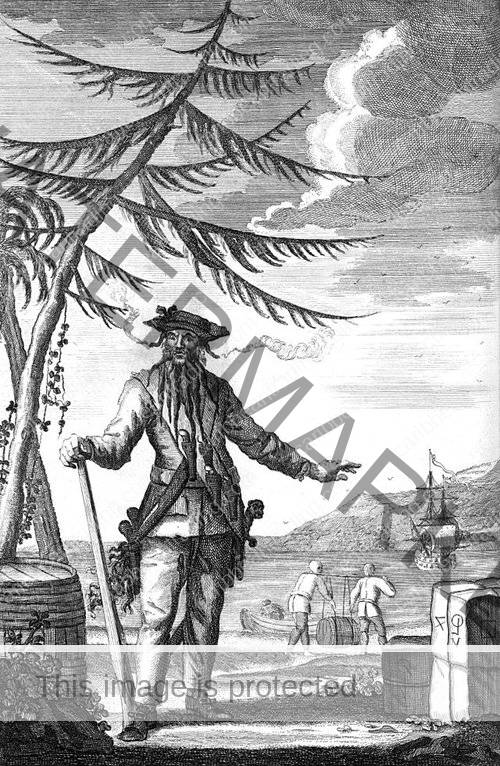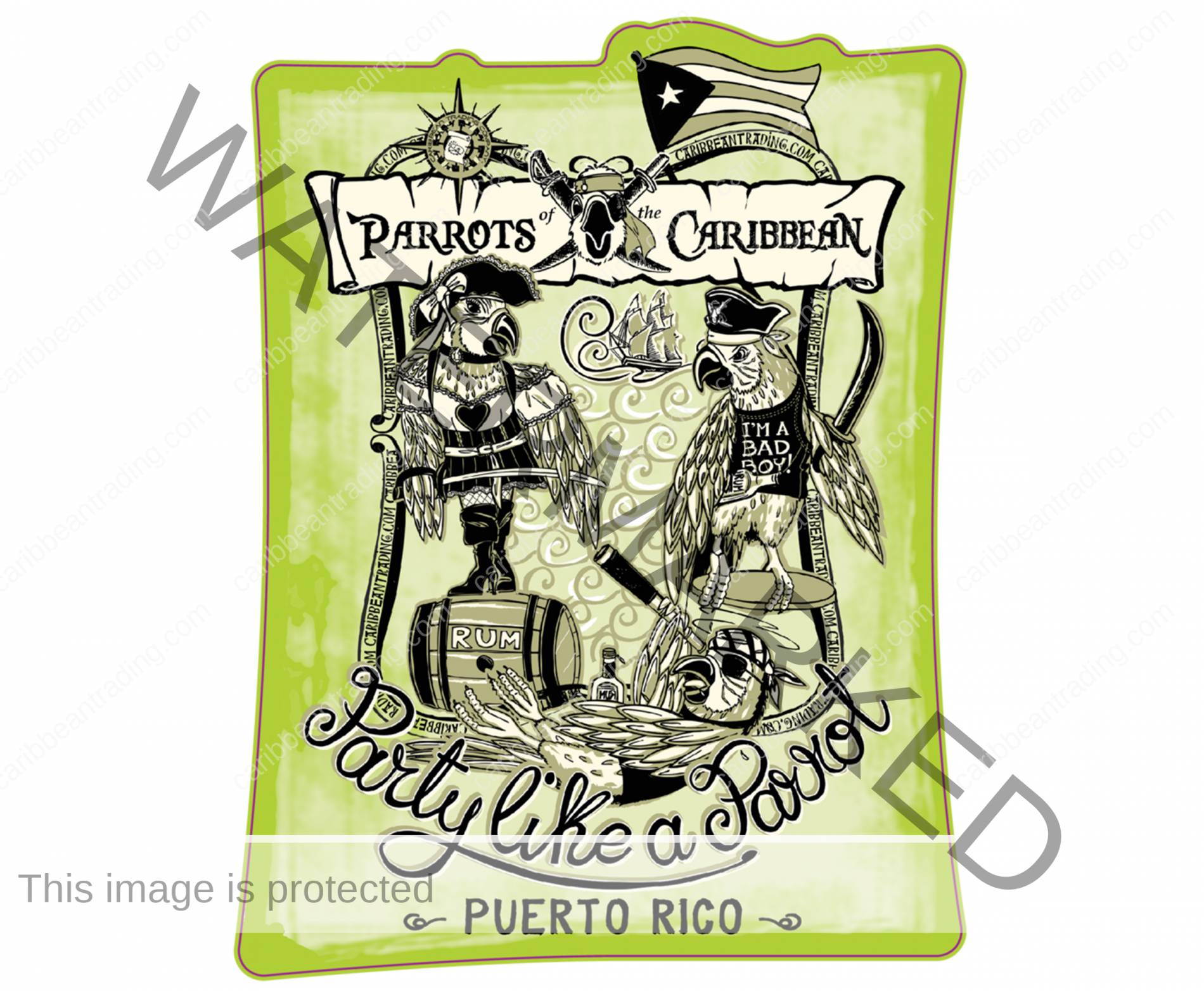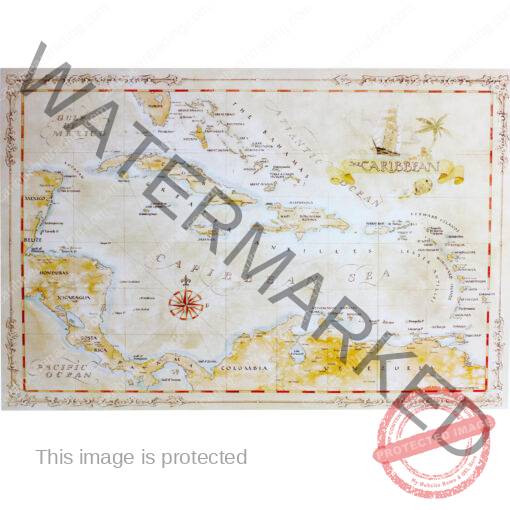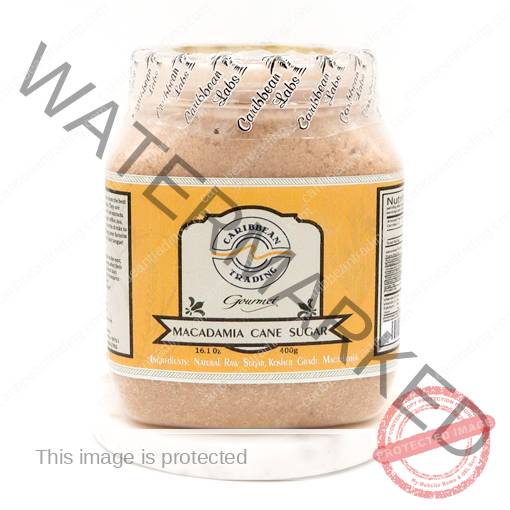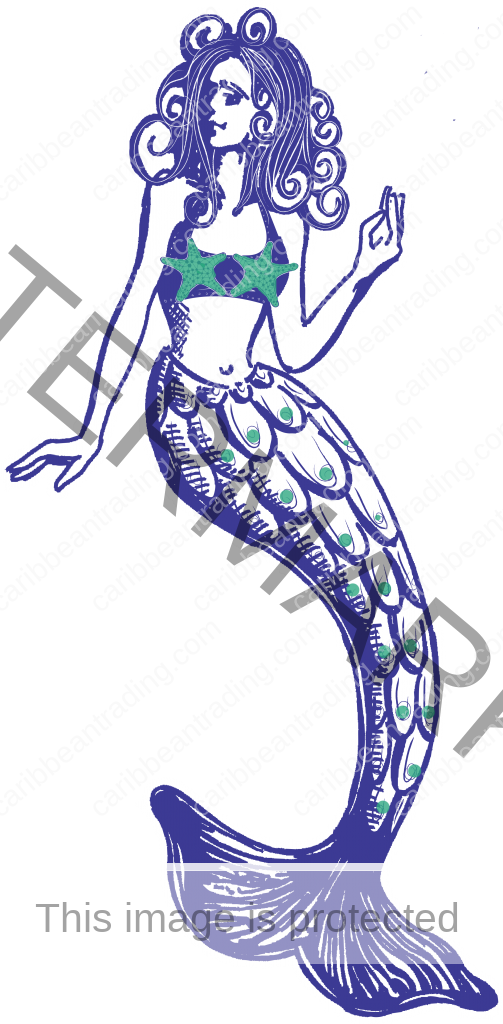Caribbean History
Captain Blackbeard: Edward Thatch | Notorious Caribbean Pirates
When people think about the history of the sea, the first thing that springs to mind is pirates. The golden age of piracy was in the Caribbean during the 16th century. It wasn’t until the 1830s that it died out, but by then some of the most famous Caribbean pirates had cemented their names into history.
Names such as Mary Read, William Kidd and Henry Morgan are all synonymous with piracy, but there is one name that stands out from the rest: Edward Thatch, who was more well-known as Captain Blackbeard.
Before I go into detail about the legend that is Captain Blackbeard, I think it’s best you understand a bit more about piracy and Caribbean pirates.
The Laws of Piracy
A lot of people are surprised when they learn that piracy has rules. The majority of pirate ships were democratic, enforcing codes of conduct that resemble some modern laws. Some of the rules were down to personal choice, such as the dress code, no females and sometimes even a ban on smoking.
Every single rule, the punishment for not following them and even sleeping arrangements would all be decided by the crew before they even stepped foot on the ship. Something that was unusual for this time was the lack of racial divides. Everybody was equal, and in some cases a pirate that had descended from Africa was the captain of their own vessel.
One of the most important activities that occurred before a ship set sail is what is known as the ship Article. This was a document that had to be signed by every crew member, agreeing on a determined percentage of profit an individual would receive.
If a disagreement occurred whilst at sea, there were a number of ways an agreement could be met. A standard way would be fighting until a person drew first blood, but in some cases a person could be whipped 39 times, executed by firearm, or in severe cases abandoned on an uninhabited island. This may come as a surprise, but walking off a plank was never a punishment used within piracy, even though it’s used in the films a lot.
Why Did People Turn to Piracy?
The majority of pirates had been sailors that had fought in naval warfare. A pirate was often called a buccaneer, a French translation that translates to smoke meat over a wooden frame and fire. The early pirates would set up a fire that was particularly smokey and had meat on. As a ship came close to investigate, the buccaneers would use the opportunity to take over the vessel.
Eventually the buccaneers were chased off the island by officials, meaning that they had to seek out a life at sea. The Caribbean was the center of European trade in 1492, which is why so many pirates chose this stretch of sea as their home. The golden age of piracy began in 1600 due to this.
Blackbeard, The Early Years
As much as historians wish they could learn more about Edward Thatch’s early years, very little is actually known. When he died, it was estimated he was of the age between 35 and 40, meaning that he would have been born around 1680. Although I refer to Blackbeard as Thatch, his name is subject to debate.
In any records that hold details of Blackbeard, there are always numerous spellings of his surname. Theach, Thatche, Tack, and Thack are all names that can be associated with Blackbeard. The reason for this is because pirates normally use fake names, with the main aim to make sure that their family name wasn’t ruined.
Surprisingly enough, a lot of people believe that Thatch was born into a wealthy and respectable family. It then makes sense that he would arrive in the Caribbean during the last few years of the 17th century, onboard of a merchant or slave ship. An 18th century Author, Charles Johnson, claims that Thatch spent time as a sailor aboard a privateer, being respected for his courage.
New Providence
The West Indies was one of the first places that a lot of maritime trade, colonialism and of course, piracy flourished. A privateer that had become a pirate, Henry Jennings, used the uninhabited island of New Providence as a base of operations for himself and crew.
It was an ideal location, being close to the Florida Strait which had major shipping lanes filled with European vessels that were crossing to the Atlantic and back. The harbour was able to accommodate hundreds of ships, and it had the added benefit of being too shallow for some of the Royal Navy’s large ships.
New Providence wasn’t a tourist town like it is today, being known as a place to stay temporarily and relax. Law wasn’t enforced and it was one of the few places where pirates were welcome to stay.
Edward Thatch loved all of the benefits the island had, moving there from Jamaica after being part of the War of Spanish Succession. Like the majority of privateers, he moved here with the aim of joining a pirate vessel.
Around 1716, he was accepted as a crew member of Captain Benjamin Hornigold’s vessel, a famous pirate who worked from New Providence’s agreed safe waters. The same year Hornigold placed Thatch in charge of a captured sloop. A year later, both Hornigold and Thatch both captained a sloop each and set off for mainland.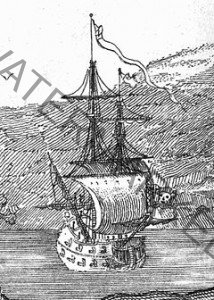
They managed to capture a boat that was carrying 120 barrels of flour out of Havana. The ship was used as a way of making money, selling the barrels of wine they had captured. Eventually they sold all of the cargo and scuttled the ship which they had named the Betty of Virginia.
It was during this time with Hornigold that Thatch was known as being his own pirate with a large crew consisting of 70 men. During September of that year, both Hornigold and Teach met Stede Bonnet, a wealthy landowner who had turned to piracy, earning the nickname “the gentleman pirate”. Apparently, Bonnets crew weren’t happy with him as a captain, so permission was given to take control of his ship named Revenge.
Hornigold was dead set on only attacking his old enemies, as he used to be a British privateer. This annoyed his crew, as they got fed up of seeing valuable ships sail by without even touching them was frustrating. Eventually, Hornigold got demoted and quickly retired from piracy, never to meet Thatch again.
It was from this that Blackbeard was born.
The Legend of Blackbeard – Caribbean Pirates
Being his own man, Thatch had control of two ships. They attacked a large French merchant vessel which was carrying a cargo of slaves. The ship was attacked successfully, killing several crew members as well as forcing the captain to surrender.
Thatch sailed this vessel down to Bequia where they let the crew and cargo go, leaving them a sloop to travel to where they wanted to go. Thatch and his crew went onto converting the ship for their own use. The ship, known as the La Concorde, was renamed to the Queen Anne’s Revenge. To make the ship more suitable for piracy, 40 guns were attached.
Through the use of the Queen Anne’s Revenge, Thatch and his crew became a formidable power. In one situation, they captured a merchant sloop named the Margaret. The vessels captain Henry Bostock and his crew, were held captive for a number of hours whilst the sloop was ransacked.
Bostock and the crew were sent back to their sloop unharmed, and he quickly sailed to his base of operations. He described Thatch as a tall man who had a long black beard. It was from this that he earned the nickname Blackbeard. Details described that his beard was braided into pigtails, sometimes held together will colourful ribbon.
It seems that Thatch had a good idea on how appearance can be used to scare a man. He wore knee length boots as clothing that was dark, often whilst wearing a wide hat and a bright coat. In battle, Blackbeard had three pistols hanging in holsters on his body. To create even more fear, he would light matches mixed with cannon powder attached to his hat. The smoke that produced gave him an appearance of a demon creature rather than a man.
Although it’s recorded that Blackbeard had a fearsome reputation, there are no accounts to be found where he murdered or harmed anyone that he held as captive.
The Blockade of Charleston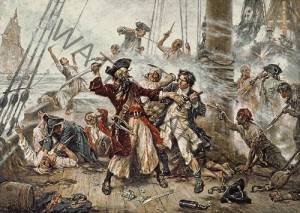
Over the years leading up to May 1718, Thatch grew his fleet so they would become a force not to be crossed. He was at the height of his power, awarding himself with the rank of Commodore. As his fleet grew, he became even more bold with his piracy.
All of the ships in his fleet blockaded the port known as Charleston. Any ships that left or entered the port were stopped, and the port didn’t have a guard ship to defend itself. For the following five days around nine ships were stopped and ransacked as they sailed past Charleston Bar.
One ship called the Crowley was stopped with the destination of London. All of the passengers were questioned and then locked below deck. Thatch told all of them that his fleet needed medical supplies, and if they didn’t get them from the colonial government they would be killed.
A passenger named Marks was sent with two pirates to collect the drugs, and was given two days to do it. For days there was no word from the group and Thatch started to believe he had been double crossed, moving the ships closer to the port. Marks did eventually return and detailed what had happened.
According to him, once he explained what had happened to the Governor, all of the supplies were gathered quickly. The two pirates he had arrived with were hard to find, but they were discovered drinking with friends and were completely intoxicated. True to his word, Thatch released any captured ships and prisoners.
The Last Battle of Blackbeard
Over the years Thatch managed to become one of the most infamous pirates there has ever been. Lieutenant Robert Maynard had access of two sloops, with the intention of capturing Thatch for an award.
On the evening of November 21st, Maynard discovered Thatch and his pirates anchored on the side of Ocracoke Island. Thatch was entertaining guests, having forgotten to set a lookout. Part of his fleet were elsewhere, meaning that his crew was much smaller than usual.
When day broke, Maynard set off with his crew in the two sloops. They were spotted, and the Adventure fired as soon as they were in range. Maynard instantly made a quick retreat, resulting in Thatch setting off to close the gap.
The Adventure caught up with the sloops, firing weapons critically damaging one and slightly injuring the other. Although it looked to be in the Adventure’s favour, it’s jib sheets were cut in an exchange of fire, resulting in a loss of control and eventually running into a sandbar. It became a race of who could float their ship first.
Maynard planned carefully, keeping a lot of his crew below deck so they could surprise Blackbeard. Thatch’s crew got onboard, firing at the small group they could see on deck. The rest of the men appeared from the hold, surprising the pirates. Blackbeard managed to rally his men, and then a bloody battle began.
Blackbeard actually managed to break Maynard’s sword, and he was quickly isolated. As Blackbeard approached to kill Maynard, one of Maynard’s crew managed to slash across his neck. Badly wounded, he was then attacked and killed by a group of Maynard’s crew. The pirates that remained quickly surrendered.
Later on, Maynard conducted an autopsy of Thatch’s body. He had been shot five times, and also cut with blades around twenty times. The body was beheaded, and the head of Thatch hung from the mast of Maynard’s ship.
The Legacy of Blackbeard – Caribbean Pirates
Blackbeard is definitely a legend from the past that will always be remembered. His contribution to piracy has cemented his place in history, and his name will always live on as a Caribbean pirate.
What did you think of this blog? Are there any other notable pirates that you think deserve mentioning? Let us know.
This blog was written by Cruise Nation, the cruise specialists
Liked this article about Caribbean Pirates? Join the Crew and Start the Journey! Connect with Us for News, Events, Lifestyle, and all things Caribbean by joining our Newsletter – Click Here to Join or find us on Facebook or Instagram.


